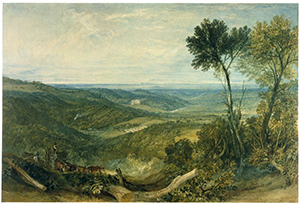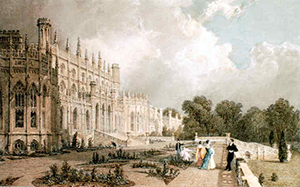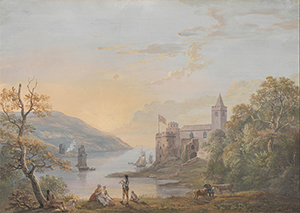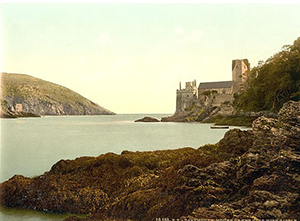This article on the tradition of topographical water colors states that “topographical paintings seem quaint and bland to modern tastes”. Maybe I don’t have modern taste, because I love them.
In the 18th and early 19th centuries, topographical art served the purpose that cameras do now—recording what places looked like. Reason #1 I love topographical art is because I find it useful when developing settings for my stories. Many places have changed considerably since the Regency, so it helps to see buildings, roads, people and animals as they were back then.
However, some artists took topographical pictures further into the realm of art, and this is Reason #2 why I love them.
When the “picturesque” tradition met the topographical traditions, mountains became higher, crags became craggier and wilderness more wild. This is where I do check these images against modern photos, but I really I don’t care that they took liberties. It tells a lot about the culture of the times and I love those pictures anyway.
Here are just a few English topographical artists whose work I enjoy.
Paul Sandby (1731-1809) is one of my favorites. Here’s a 1794 picture of Darmouth Castle and a comparison photograph.
Joseph Mallord William Turner (1775-1851), is famous for works which were impressionistic before the Impressionist movement had fully begun, but he also produced landscapes in the more traditional manner. Here’s his “Vale of Ashburnham”, 1816.

A later artist I enjoy is Thomas Allom (1804-1872). Here’s his “Eaton Hall”, published in the 1830s.

Do you enjoy topographical art? Do you have any favorite artists or pictures? Please feel free to share links!
Elena



I love all of those, but I’m particularly fond of Turner even if he did begin to lose himself in light in his later years. I like his Italy paintings very much.
I like the range of Turner’s paintings. The more impressionistic ones aren’t as useful for research, though! I just googled Turner and Italy and found this exhibit I would very much like to see.
http://newyorkarts.net/2009/06/turner-and-italy-national-galleries-of-scotland/